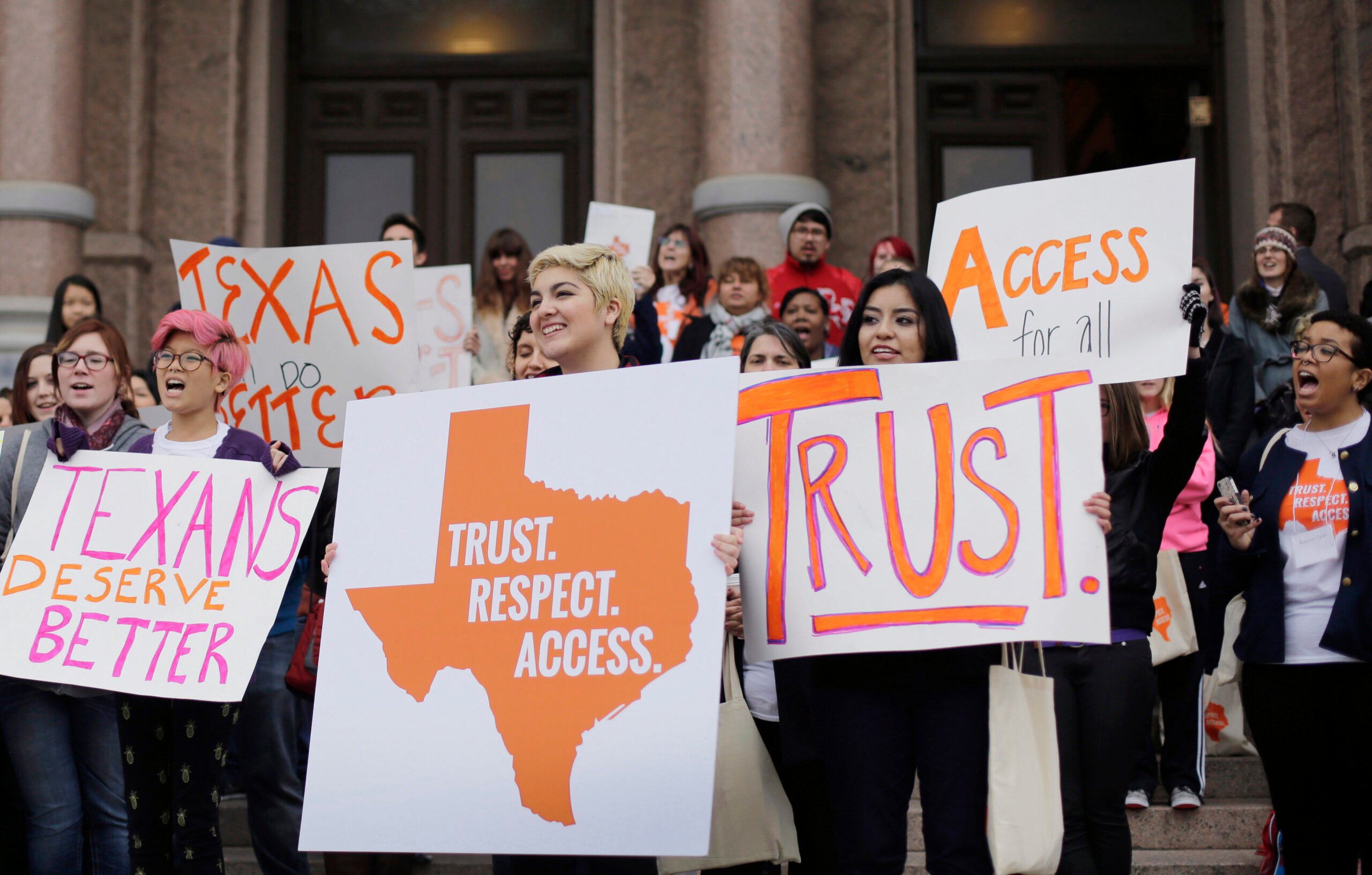A Nightmare Scenario for Women’s Health
By excluding Planned Parenthood from the Women’s Health Program, Rick Perry has intensified Texas’ family planning crisis
This is the second story in our Collateral Damage series examining the impact of family planning cuts in Texas. You can read the first story in the series here.
 The money to pay for the contraception of Texas’ poorest women largely comes from two pots: federal grants that are distributed by the state’s family planning program, and the Women’s Health Program (WHP), which is part of Medicaid. They are two different programs with separate funding streams but have the same goal: prevent unplanned pregnancies. And, in the past year, Texas legislators attacked both.
The money to pay for the contraception of Texas’ poorest women largely comes from two pots: federal grants that are distributed by the state’s family planning program, and the Women’s Health Program (WHP), which is part of Medicaid. They are two different programs with separate funding streams but have the same goal: prevent unplanned pregnancies. And, in the past year, Texas legislators attacked both.
In the 2011 legislative session, state lawmakers slashed funding for Texas’ family planning program by two thirds. As the Observer recently reported, cuts to the family planning program caused 146 clinics across the state to lose funding. More than 60 clinics shut down, including 12 run by Planned Parenthood. The clinics that managed to stay open became increasingly reliant on the second funding stream—the Women’s Health Program. Now that’s in jeopardy as well. A recent federal court ruling will allow state officials to exclude Planned Parenthood from the Women’s Health Program, which could cause more clinics to soon close. In effect, the state has dealt family planning in Texas a fiscal one-two punch.
The closures could leave thousands of poor women without access to well-woman exams and contraception. In Hidalgo County, for instance, four Planned Parenthood clinics that have already closed due to cutbacks in the state family planning program. Now half of Planned Parenthood of Hidalgo County’s budget comes from the Women’s Health Program. If that funding stream is lost as well, Planned Parenthood of Hidalgo County—which serves 23,000 clients, 90 percent of them below the poverty line—may have to shut down another three clinics and lay off up to 35 staffers. A WHP withdrawal would also impact Planned Parenthood of West Texas, which would lose 60 percent of its revenue; 90 percent of Planned Parenthood of Lubbock’s revenue would disappear too. If clinics in those areas were to close, 5,000 poor women in West Texas could lose access to preventive services and birth control.
The legal fight over the WHP isn’t over. Gov. Rick Perry and Texas Republicans have been trying to exclude Planned Parenthood from the WHP, because they say program funds shouldn’t flow to organizations (or affiliates) that provide abortions. Planned Parenthood has long argued that the clinics that offer abortion services are functionally and legally separate from family planning clinics. After the state barred it from the WHP earlier this year, Planned Parenthood filed a legal challenge to its eviction. Planned Parenthood officials argued in a legal memo that without WHP funds, its operating budgets will be so gutted that they will have to “reduce services, lay off employees, and/or close clinics.” They contend this loss would irreparably damage the “health of not only their WHP patients, but all of the Texans who rely on them for preventive health care.”
On August 21, a federal appeals court lifted a temporary injunction against Planned Parenthood’s removal from the program, meaning that the state may stop WHP funding for Planned Parenthood while awaiting a federal district court’s judgment due this fall. That court will decide if the state can legally exclude Planned Parenthood from the program. If Texas loses the court fight—and is forced to include Planned Parenthood—state officials have threatened to end the WHP all together. In the meantime, the state has what it wants: a WHP without Planned Parenthood. In a statement, Perry described the recent federal appeals court ruling as a “win for Texas women, our rule of law and our state’s priority to protect life.”
The Obama administration wasn’t as enthusiastic about the idea, and it decided to stop paying the bills. WHP is a highly efficient program, serving more than 100,000 of Texas’ low-income women, according to state figures. For every $1 that Texas pays for the WHP, the federal government kicks in another $9. With Texas insisting on excluding Planned Parenthood, the federal government will no longer pay for the program. In his zeal to block abortion providers from operating in Texas, Perry may deprive the state of more than $40 million in federal funding. He has promised to continue the service with only state dollars (provided the state wins in court and can exclude Planned Parenthood). But his office has yet to clarify the source of these new funds.
Perry also assured women that, under the new state-funded regime, they will see no change in access to well-women services. However, journalist Andrea Grimes’ difficulty in getting an appointment shows this promise may be empty.
That’s because the WHP leans more heavily on Planned Parenthood than the Texas governor may realize. He has erroneously stated that Planned Parenthood serves only 20 percent of WHP clients when, in fact, it’s more than double that. Indeed, in many areas Planned Parenthood is the dominant WHP provider, meaning that if a woman wants an appointment with someone else, she’ll wait months to be seen. Furthermore, as Grimes found, in 25 cities across the state, from Edinburg to Lubbock, Planned Parenthood is the only WHP game in town.
Proponents of a Planned Parenthood-free WHP argue that local family planning clinics will step up to absorb the demand, according to the Texas Tribune. But that’s not possible if they no longer exist. In massively defunding the community-run organizations that had relied on family planning grants, lawmakers failed to anticipate how profoundly they would destabilize the system. For some small providers, the family planning grant had been the glue that kept their organizations afloat. Now, the WHP portion of their revenue is insufficient to cover their costs and, despite still technically contracting with the state, they can no longer afford to exist.
The community health centers that gained most of the family planning money are also in financial peril. These community health centers already saw from large cuts to their budgets, and now must absorb new patients will challenge straitened resources. “This is the equivalent of taking a big provider network out of the market and displacing all the patients,” said Michael Austin, CEO of Midland Community Healthcare. He should know. One Planned Parenthood clinic in nearby Odessa has already closed due to state cuts, causing a trickle of unfunded clients to his door. If Planned Parenthood loses its legal battle, he knows that displaced patients from their Midland clinic will come to him too. “It’s a whole lot of mess,” he said with a sigh.
It’s a whole lot of mess for the patients too. Finding another WHP provider will be tricky when a recent George Washington University study found that 25 percent of WHP contractors are so small-scale that they only serve one patient. Those doctors can’t and won’t scale up to absorb the demand.
For a system of family planning clinics that’s seen reductions in its two main sources of funding, the negative consequences may be just beginning.


